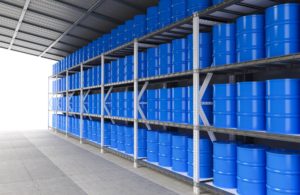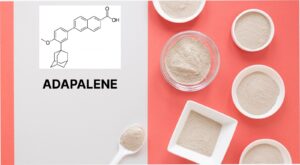
Introduction
What makes a skincare product truly effective? The science behind skincare lies in the careful selection and combination of ingredients that interact at a molecular level to enhance skin health. Pharmaceutical skincare manufacturers and formulators play a critical role in designing stable, bioavailable, and efficacious formulations.
This blog breaks down the molecular mechanisms of key skincare ingredients, the formulation challenges involved, and the regulatory framework that ensures product safety.
Molecular Mechanisms of Key Skincare Ingredients
Understanding the science behind ingredients is essential for developing advanced skincare formulations. Here’s how some of the most important skincare ingredients work:
1. Antioxidants: Neutralizing Free Radicals
Antioxidants protect the skin from oxidative stress caused by free radicals, which contribute to aging, pigmentation, and inflammation.
- Vitamin C (Ascorbic Acid): A potent antioxidant that boosts collagen synthesis and reduces hyperpigmentation. However, its stability in formulations is a challenge due to oxidation. Stabilized forms like Sodium Ascorbyl Phosphate are commonly used in pharmaceutical formulations.
- Vitamin E (Tocopherol): Works synergistically with Vitamin C, enhancing its efficacy and improving lipid barrier function.
- Niacinamide (Vitamin B3): Reduces inflammation and improves skin elasticity while reinforcing the skin’s barrier function.
2. Peptides: Boosting Collagen and Repair
Peptides are short chains of amino acids that act as cell-signaling molecules, instructing skin cells to produce more collagen, elastin, and other proteins.
- Matrixyl (Palmitoyl Pentapeptide-4): Stimulates fibroblast activity, improving skin firmness and reducing wrinkles.
- Copper Peptides: Known for their wound-healing properties and ability to regenerate skin.
Explore a leading manufacturer of APIs.
With over 10 years of expertise, we ensure GMP compliance and provide reliable, high-quality solutions.
3. Retinoids: The Gold Standard in Anti-Aging
Retinoids (Vitamin A derivatives) are well-researched for their ability to accelerate cell turnover and stimulate collagen production.
- Retinol: The most common form, but requires conversion into retinoic acid to be effective.
- Retinaldehyde: A more bioavailable alternative to retinol, requiring only one conversion step.
- Tretinoin: The most potent form, often prescribed for acne and anti-aging.
4. Botanical Extracts: Natural Actives in Skincare
Plant-derived ingredients are widely used for their bioactive properties, but maintaining consistency in formulations can be challenging.
- Green Tea Extract (EGCG): Antioxidant and anti-inflammatory, often used in anti-aging and acne formulations.
- Centella Asiatica (Gotu Kola): Supports wound healing and increases collagen synthesis.
- Licorice Extract (Glabridin): Effective in reducing hyperpigmentation by inhibiting melanin production.
Formulation Science and Ingredient Stability
1. Enhancing Ingredient Bioavailability
The effectiveness of an active ingredient depends on bioavailability, or how well it penetrates the skin and reaches the target cells.
- Encapsulation Technologies: Liposomes and nano-emulsions improve ingredient penetration and stability.
- pH Optimization: Some ingredients, like Vitamin C and retinoids, require specific pH levels for maximum efficacy.
2. Stability Challenges in Skincare Formulations
Many active ingredients degrade when exposed to light, air, or water, affecting product performance.
- Vitamin C oxidation leads to reduced potency and discoloration. Using airless packaging and combining with Vitamin E can improve stability.
- Hyaluronic Acid degradation occurs in low-pH environments. Crosslinking technology enhances its longevity in formulations.
- Retinoids degrade under UV exposure, so they are often packaged in opaque or air-restrictive containers.
3. Role of Excipients in Active Ingredient Performance
Excipients (inactive ingredients) play a crucial role in stabilizing active ingredients, enhancing absorption, and improving product texture.
- Emulsifiers (Polysorbates, Lecithin): Help combine oil and water-based ingredients for a uniform formulation.
- Humectants (Glycerin, Hyaluronic Acid): Attract moisture to keep the skin hydrated.
- Preservatives (Phenoxyethanol, Ethylhexylglycerin): Prevent microbial contamination without irritating the skin.
Regulatory Landscape and Compliance in Skincare
1. Global Regulatory Framework for Skincare Ingredients
Pharmaceutical skincare manufacturers must comply with strict regulatory standards to ensure safety and efficacy.
- FDA (United States): Oversees the safety of cosmetic and over-the-counter (OTC) skincare products under the Federal Food, Drug, and Cosmetic Act (FD&C Act).
- European Union (EU): Regulated under Regulation (EC) No 1223/2009, requiring safety assessments before market approval.
- China’s NMPA (National Medical Products Administration): Requires animal testing for certain imported skincare products, though this is changing with recent regulatory updates.
2. Compliance Steps in Product Development
- Ingredient Safety Assessment: All ingredients must be reviewed for toxicology, skin irritation potential, and stability.
- Microbial Testing: Ensures that formulations are free from contamination.
- Clinical Trials (if required): Some claims, like “reduces wrinkles by 30%,” may need clinical validation before approval.
Innovations and Future Directions in Skincare Science
1. Emerging Ingredients in Skincare
- Bakuchiol: A plant-based alternative to retinol with fewer side effects.
- Exosomes: Cell-derived vesicles that aid in skin regeneration and repair.
- Adaptogens (Ashwagandha, Rhodiola): Reduce stress-related skin issues by balancing cortisol levels.
2. Advancements in Delivery Systems
- Microneedle Patches: Enhance the absorption of active ingredients by creating microchannels in the skin.
- Hydrogel and Film-Forming Technologies: Provide sustained release of actives for longer-lasting effects.
3. Sustainability and Green Formulations
- Biodegradable Excipients: Replacing microplastics in exfoliators with natural alternatives like jojoba beads.
- Waterless Formulations: Concentrated skincare products that reduce water consumption and packaging waste.
Conclusion
The science behind skincare is a complex interplay of chemistry, biology, and formulation expertise. Pharmaceutical skincare manufacturers and formulators must carefully consider ingredient stability, bioavailability, and regulatory compliance to create effective, safe, and innovative products.
As new ingredients and technologies emerge, staying informed about advancements in skincare science will be crucial in developing next-generation formulations that cater to evolving consumer needs and regulatory standards.
FAQs
What makes an ingredient effective in skincare formulations?
Effectiveness depends on molecular structure, skin penetration ability, and formulation stability. Encapsulation and pH optimization can enhance ingredient performance.
How do formulators ensure ingredient stability in skincare products?
Techniques like airless packaging, emulsification, and antioxidant pairing (e.g., Vitamin C + Vitamin E) help prevent degradation.
What are the biggest challenges in formulating skincare products?
Balancing efficacy with stability, ensuring regulatory compliance, and maintaining sensory appeal (texture, fragrance, absorption) while keeping the formula safe and effective.
Are natural skincare ingredients better than synthetic ones?
Not always. Synthetic ingredients can be more stable and effective, while natural ingredients may vary in potency and require additional stabilization.



